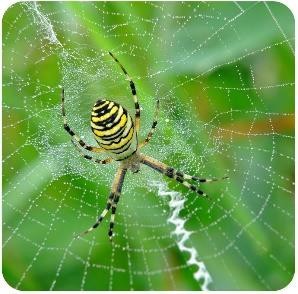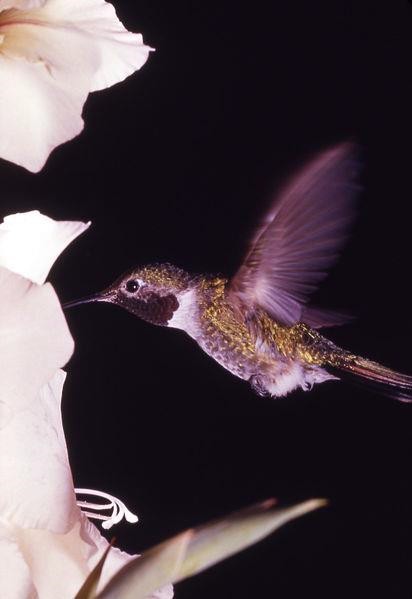READ: Energy
Section 4: Energy: Is it worth it?

Why do animals behave the way they do? A cat chases a mouse to catch it. A mother dog nurses her puppies to feed them. All of these behaviors have the same purpose: getting or providing food. All animals need food for energy. They need energy to move around. In fact, they need energy just to stay alive. Energy allows all the processes inside cells to occur.
Why do spiders spin webs?

You have probably seen a spider web before. You may even know that spiders create webs to catch their prey. This is an example of animal behavior.
Organisms must balance the amount of energy they use to get food with the amount of energy they gain from the food. They have to decide if the prize is worth the effort. The spider shown above had to use a lot of energy to build his web, but hopefully he will be able to catch many insects before he builds a new one.
Food for Thought
If the spider uses 100 kcal to build his web, and each insect caught gives him an average of 20 kcal, how many insects does he need to catch before it’s worth it to build the web?
Imagine that you had to run for an hour in order to get a candy bar. Would you do it? Probably not, because you would use more energy running than you would get from the candy bar. On the other hand, if you just had to walk around the block, it might be worth it. Hummingbirds have to use energy hovering at a flower in order to drink the nectar. They will only do it if they get more energy from the nectar than it takes to hover. A coyote will chase a rabbit to catch it, but only for so long. At some point, it’s not worth it anymore because he has to use too much energy in the chase.
Animals have come up with many creative strategies to balance the energy used to obtain food with the energy gained from the food. One example is bird migration. The broad-tailed hummingbird pictured below is a common visitor to Utah in summertime. But these hummingbirds migrate all the way to Mexico for winter. Migration is a huge expenditure of energy, but the winters in Mexico are warmer, so the flowers continue to bloom and produce nectar for the birds to eat. Even though it is very difficult to fly so far, they are rewarded with plenty of available food, so the prize is worth the effort.


Some animals, such as this northern bat from Norway, hibernate during the winter because there is not a steady supply of available food. During hibernation, animals may carefully regulate their metabolism to slow it down and may also lower their core body temperature. Prior to hibernation, when food is plentiful, they eat in excess in order to store energy for the long period of inactivity during hibernation.
Hibernation is one strategy that they use in order to balance their energy expenditures with their energy input from food.
After you have completed this part of the lesson, you can check the associated box on the main course page to mark it as complete